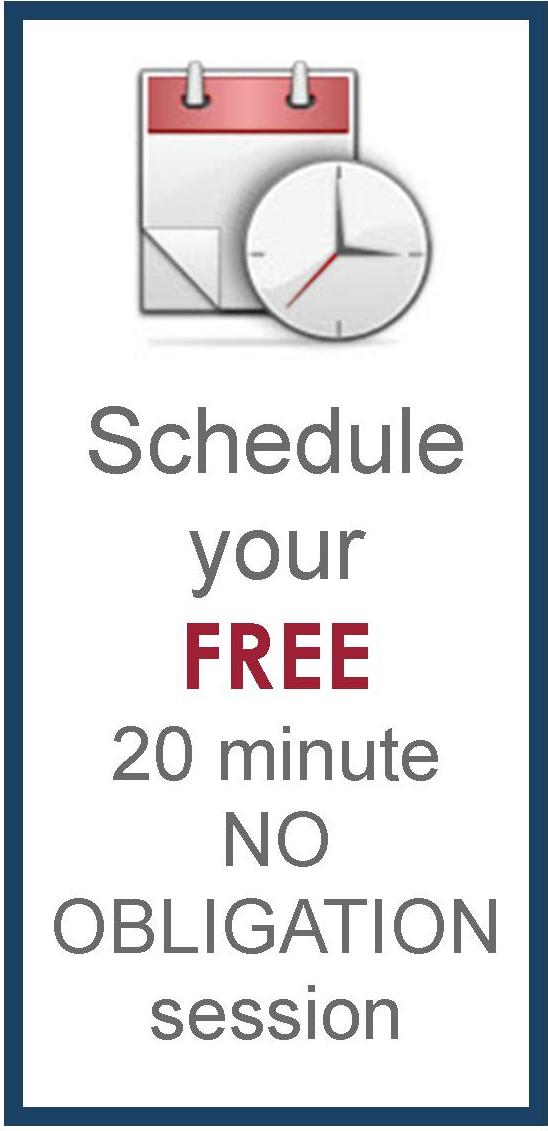How do I organize paper in my office?
Table of Contents
6 questions to ask to organize the paper in your office
Why letting go of paper is difficult
Let go of paper and stop worrying
- What is the worst thing that can happen without it?
- Are there tax or legal implications?
- Is it recent enough to be useful?
- Is it difficult to obtain again?
- Can I identify a specific use (for me)?
- Does this require action (by me)?
6 questions to ask to organize paper in your office
Introduction

“Organizing is what you do before you do something so that when you do it, it is not all mixed up.” ~ Winnie-the-Pooh
Is it time to declutter and organize the paper in your office? Spring break is around the corner for most academics and with the return of daylight savings time, it might be a good time to think spring cleaning to improve the paper flow in your office. If you are looking around at piles of paper on your desk, floors, and bookshelves, you are not alone. Academics and knowledge workers find it difficult to let go of paper. I’ll give you a little of the why and tell you how to begin the sorting process to improve paper handling.
Why letting go of paper is difficult
Citing the work of Allison Kidd, as well as that of co-authors Abigail Sellen and Richard Harper, Malcolm Gladwell distilled what he learned about why paper persists in a 2002 The New Yorker article. When the piece was written, word processing did not offer all the options we have now, like iterative review and commenting by different readers. Paper annotations were a great way to create a trail of edits and changes. That is no longer true. However, much of what is suggested in the article in terms of how academics and knowledge workers think and produce remains the same.
For people whose product is ideas and the written word, such as academics and knowledge workers, there are good reasons for not letting go of paper. The most counterintuitive one is this: those piles of paper represent possibilities. You might use one of those articles or documents for an article or a book you are working on. You know it relates tangentially to what you are doing. You are just not sure yet exactly where it fits. So, you keep it close by just in case you might need it…and pretty soon, you have a pile of papers representing all those things you have been thinking about but are not sure what to do with yet.
In other words, it may be hard to let go because hanging on to paper is fundamental to the way you work. The old adage that a messy desk is the sign of a creative mind has a grain of truth in it. Your messy desk may not represent disorganization and an inability to file away but may be a sign ideas are still in process.
Clutter means “to clot”
Did you know that the word clutter originates from the Germanic word “klotz” combined with the Old English word “clott.” To clot means to coagulate to “stick material together to form a thick mass.” Clotting stops the flow, as in clotting blood or creating clotted cream from milk. The word “clutter” has been around since the 1400s and derives from “clotern.” In the 1550s, clutter was a verb meaning to collect and crowd things together; by 1570, it had become a noun meaning “things lying in heaps or crowded confusion (from the Online Etymology Dictionary).
Clutter therefore stops the flow, and too much clutter can even stop the flow of ideas. When the brain gets overwhelmed by too much paper, the tendency is to ignore it. Research has shown too many emails in your inbox can shut down your ability to deal with them. Best practice is to keep less that 25 messages in your inbox, which you do by having pretty much an unlimited number of messages in your outbox. More than ¼ inch of papers to file will keep you from tackling it, as you get the message, “that’s big job” and put off handling. Now imagine what happens to your brain when confronted with many piles of paper scattered over your desk, your office cabinets, your shelves, and your floor.
I do understand some people organize their piles and know exactly where something is when they need it, right down to the approximate depth in the pile they need to go to find what they are looking for. Those people are the “pilers,” not the “filers.” If it works for you, great. Leave those piles. But if like most people you have no real idea of what’s in the pile, or haven’t touched it for ages, it’s time to let it go—to a filing cabinet, or a box, to recycling, or even shredding.
Let go of paper and stop worrying
It may be that you really don’t need to worry about all that paper anymore. Keywords are far better for finding anything than hunting for paper documents. I had to resort to the keyword “Gladwell” to find the article I mentioned earlier in my own computer files. No idea where I put the paper copy—if I even ever had one!
The personal computer is a better and more efficient filing system for most of our knowledge work today. Better certainly than most vertical files. Especially if you stuff them so full of paper, you can barely get your fingers into the files. Trust me, I’ve seen filing cabinets like this. Plus, how many times have you said to yourself, “I know I’ve got that paper somewhere, then resorted to plugging key words into an internet search engine to find what you wanted. I sort of enjoy doing this since such searches can bring up related papers or ideas I did not know about already.
Use the wastebasket rules
These rules are called “The Art of Wastebasketry” by Barbara Hemphill. As you begin to start the process of clearing out to create better paper flow, here are the questions to ask yourself when considering tossing an item:
1. What is the worst thing that can happen without it?
Most of the time, the answer to this question is, “I will be inconvenienced or slightly embarrassed.” You may have to spend time getting a document again involving a web search, or you may have to ask someone to send you a document again. The most important thing is knowing where you got the original document. For instance, if it’s a memo with new staff names, the person who wrote it should easily be able to give you a copy. You simply must remember who—or what department—the memo originated.
2. Are there tax or legal implications?
You may not know the answer to this question immediately for some items, but often you will. If you are involved in a payroll or a credit card dispute, you will want to hand on to the documentation. If you are doing work for someone else, you may need to have a specific paper trail of actions taken or tasks completed. Fortunately, most paper items that cross your path will not rise to this level, and you can toss them in good conscience.
3. Is it recent enough to be useful?
This rule is a particularly fun one to consider. For example, if you are keeping memos on changes to an organization’s policies or keeping old financial statements from your bank, you can start tossing those. I’ve seen whole desk drawers cleared out just by eliminating the old, out-of-date material.
In terms of policies, most people simply need to know the current policy. For example, if a personnel policy five years ago provided for 4 sick days and 7 holidays, but the current employment manual provides for “unlimited personal time off,” you only need to be concerned with the rules now. (Fun trivia fact: people take less time off when told it is unlimited than given strict guidelines.)
If you think about financial statements, particularly your records for retirement investments, you do not need more than the current financial statement. It doesn’t matter how much money you had in an account a year ago, 5 years ago, or 10 years ago. For better or worse, what matters is how much money is there when you want to take it out. This is often a harsh truth for soon-to-be retirees when realizing their time to leave coincides with a market downturn.
4. Is it difficult to obtain again?
For almost everything you can name, with the advent of the accessible internet in the late 1990s, items that used to be difficult to obtain again no longer are. Even something like a birth certificate can be obtained as a certified copy from your local bureau of vital statistics without leaving the comfort of your computer. Bank records? Online. Old articles? Online. Reference books? Online. Yes, you may have to pay for access, but you should still be able to get what you need.
Items I would consider extremely difficult to get again would be historic documents unlikely to have been scanned and entered into anyone else’s database. For instance, you may have a handwritten family record of births and deaths that no one else has. Or you may have a journal or poetry written by a great-grandparent.
5. Can I identify a specific use (for me)?
A specific purpose for an item means just that. What do you want to do with it? Are you writing a history of the 1930s American depression, and you have found some household account journals while clearing out a relatives estate? Then you have identified a specific purpose for you.
You can apply this to some non-paper items as well Most of us have old cables and electronic equipment stashed away in a drawer. We kept thinking we might need it again. The truth is technology changes so quickly it’s unlikely you’ll be able to use it, and as you look through the pile, you may find you no longer even know the use for a specific cable or piece of equipment. You can toss these with impunity.
6. Does this require action (by me)?
This is the last question you ask yourself. If the answer is yes, you need to discern what the required action will be and when you will have to do it. If you are writing an article, count backward on your calendar and give yourself a realistic time frame for getting this accomplished.
If an article is due on July 31st, and you think you need a minimum of four months lead time to read the work others have done on the topic, put “begin reading material” on your March calendar, and maybe “start writing article” at the beginning of May. If you want to sign up for a conference or a workshop, put the registration deadline on your calendar, and a reminder to sign up a couple days before the registration due date. Some things require a short on-ramp time, and others require a lot more. That’s why you need to be discerning.
The OHIO rule myth
Many people teach the “Only Handle It Once (OHIO) rule as a way of dealing with paper documents. Unfortunately, it doesn’t work in all (maybe most!) situations. Books, papers, and emails arrive, the telephone rings and people drop by all day long. Professors especially need to let go of the idea that once handled appropriately, an item will not need to be revisited. Academia runs on multiple iterations, and you may end up handling reference articles many times before you are finished. Rather than telling yourself, “I’ll only handle this once,” know what to do with your incoming item.
The two-minute rule
There are some items you can truly only handle once then get rid of them. When dealing with all those incoming items, handle the easy tasks right away and unclutter your brain for more important tasks. Use the two-minute rule: if you can deal with an item within two minutes, do so and move on. As you look at an email, can you delete it? Can you simply copy a date for an upcoming meeting on your calendar? Can you forward the email to someone else to deal with it? Once you have dealt with the less onerous tasks, you are free to go on to more time-consuming tasks.
To make a habit of this, try practicing the two-minute rule at home as you go through your physical mail. Indispensable items in the quest to reduce paper immediately are a wastebasket for landfill garbage, a recycling bin of some sort, and a shredder. Here’s a typical list for me after picking up the physical mail and how I handle it using the two-minute rule:
- Flyer for local tree trimming company. Recycle.
- Letter from the local government about taxes. Take to the office for handling later.
- Advertisement to grant me credit with a form to fill out. Shred.
- Brochure for travel by air to various tourist destinations. Recycle.
- Postcard from friend in faraway place. Keep in friend correspondence bowl.
- Paper coffee cup carried in from café: Wastebasket.
And so on. You will be surprised how much stuff you can get rid of immediately with this technique and how quickly you will begin to apply it to your office paper flow.
To conclude
For more help on how to get organized, contact Hillary to learn her 5-step TAFFY decision-making process to help you understand and put into practice new ways of handling paper flow.
Tags: academia, academic, get organized, Getting Organized, goal setting, habits, happiness, letting go, solutions for procrastination





